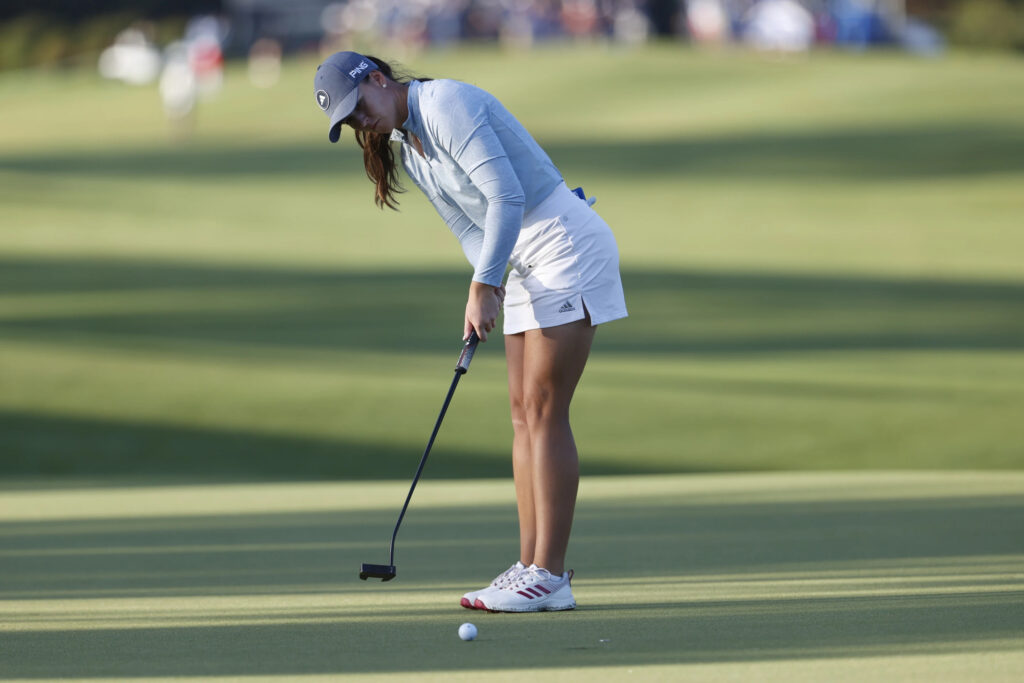
Ten years ago, most golf fans would have been hard-pressed to name five female golfers.
The lack of awareness was entirely due to the limited opportunities to even watch women’s golf. Media deals were small and were often overpowered by higher-budget golf, so channels would air the Ladies Professional Golf Association (LPGA) during inopportune times and on playback. Furthermore, the LPGA suffered from not having a presence that could draw attention in the way that Tiger Woods drew attention to the PGA.
The process to “grow the game” was far from simple. Changes needed to be made to the amateur game in order to spark growth for the LPGA Tour. One of the biggest improvements recently has been the addition of the Augusta National Women’s Amateur (ANWA). Historically, women were excluded from Augusta National Golf Club (ANGC), the host course of the prestigious Masters Tournament each year, with the first woman member not being welcomed until 2012. Given the excitement that was generated around The Masters, ANGC Chairman Fred Ridley knew an opportunity existed for the women’s game. In 2018, he decided that Augusta National would host the ANWA in hopes of growing the popularity of women’s golf for years to come.
This year marks the fifth iteration of this tournament and the event has been sold out since its inception in 2019. After her recent appearance in 2023, Duke star golfer Erica Shepherd mentioned she particularly enjoyed seeing the effect of the tournament on young girls across the course.
The creation of the ANWA, along with a large investment in many other amateur and junior girl tournaments, has led to an increase in viewership of the pro game. In 2022, the Chicago Mercantile Exchange (CME) Group Tour Championship drew 4.7 million viewers, but the same event drew nearly nine million viewers. These increases have led to arguably the most important change in the game, an increase in prize money. In 2024, the LPGA will have ten tournaments that feature championship purses of over $3 million.
There will be a record $116 million in total prize money throughout the year. The regular LPGA events are not the only events seeing record-breaking increases, as both the U.S. Open and Women’s PGA Championship have surpassed $10 million in prize money. Even with these encouraging signs, the disparity between the prize money available in the PGA versus the LPGA is still over $300 million.
What has been missing from the LPGA Tour for years has been the “it” factor, especially for American viewers. Many thought Lexi Thompson or Nelly Korda could provide just that, but, the current focus in the women’s golf scene has turned to LPGA Tour rookie Rose Zhang. During her time as a student-athlete at Stanford University, Zhang surpassed fellow Stanford phenom Woods’ record of most collegiate wins as a Cardinal by winning her 12th tournament last year. Arguably the most decorated amateur in women’s golf history, Zhang won the U.S. Women’s Amateur, U.S. Girls Junior, ANWA and was a two-time NCAA
D-1 Individual Champion.
Zhang’s parallels to Woods are uncanny. Her spotlight was further solidified when Zhang won her first ever LPGA event. She became the first LPGA Tour member to accomplish that feat since 1951 and finished in the top ten for three of the five majors last season. If Zhang can have any semblance of the same effect as what Woods had on the men’s game in the early 2000s, the economic gap between the LPGA and PGA will continue to shrink.
Over the last ten years there has been immense progress, but there remains a massive opportunity for continued growth. Tech has yet to tap into that growth opportunity. While Tech would need to add a women’s golf team in compliance with Title IX, such a team’s ability to have a perennial top-25 women’s golf team and play a key role in growing the game.
Currently, 12 out of the 15 teams in the ACC have a women’s golf team. One of those is the Wake Forest Demon Deacons, the 2023 NCAA D-1 Team Champions. Of those 12 programs, few have a recruiting pool similar to what Tech could access. Not only could the Jackets tap into the thriving junior golf scene in Georgia and the Southeast, the school’s large international population attracts players from both Europe and South America. Aside from recruiting, a Jacket women’s team would capitalize off the existing Georgia golf market created by The Masters and the FedEx Cup.
Since collegiate golf teams typically have no more than ten players, that would place minimal burden on the department. Further, the travel, especially for only about five to seven players per tournament, is considerably less than taking a team of 20-30 to an away game.
One concern that would almost certainly surface in any discussions with the possibility of this addition would be space constraints.
Currently, the men’s team practices at Noonan Golf Facility near Atlantic Station. This private facility would likely not fit two teams and initially, it may be difficult to find practice facilities close to campus.
While currently a hypothetical, the Athletics department should consider looking into the growth opportunity of the addition of a women’s golf program. Given the consistent rise of women’s amateur and pro golf, now is the perfect time for exploration.
The post Could Tech play a large role in women’s golf? appeared first on Technique.
